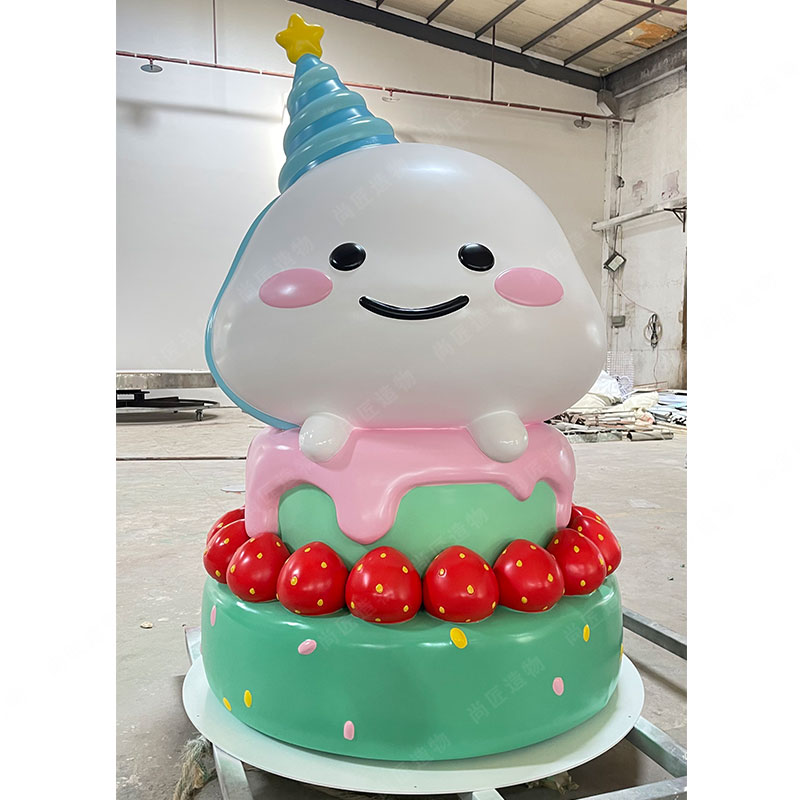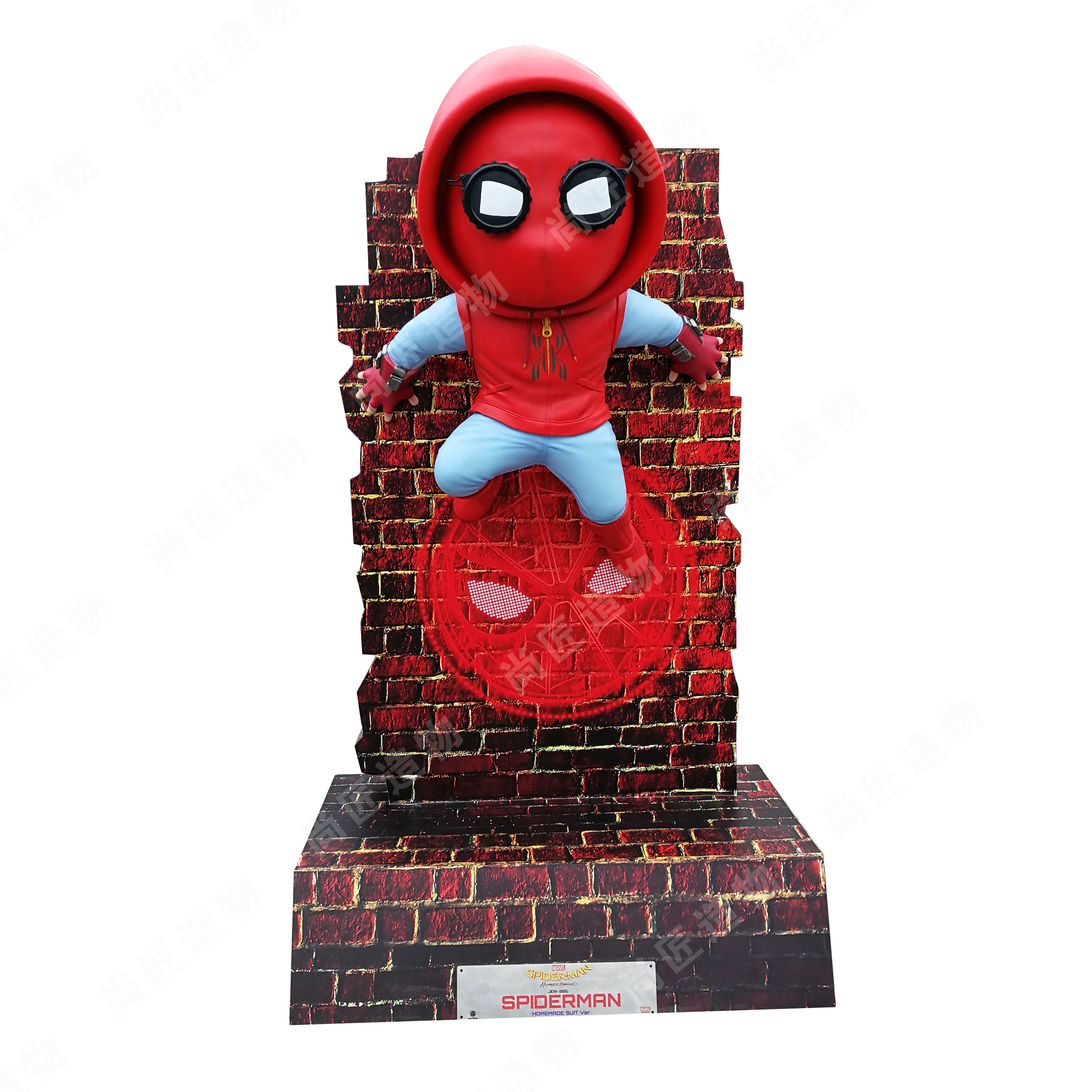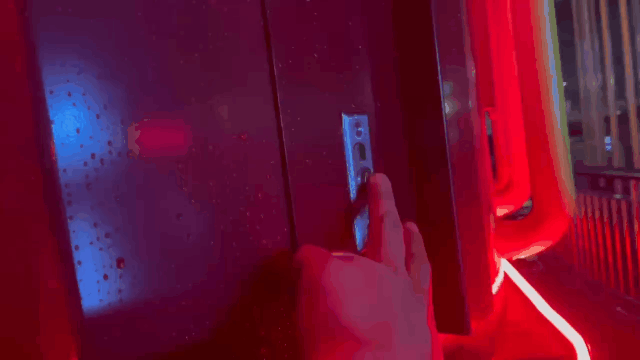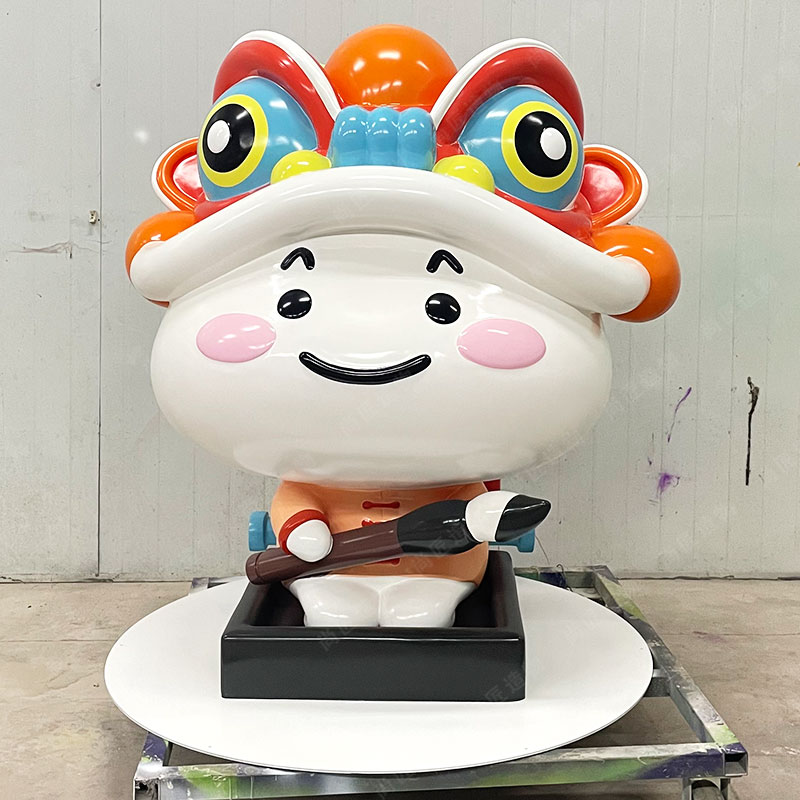Key Takeaways
Kinetic sculpture art intersects with licensed intellectual property (IP) in complex ways, raising questions about creative freedom, copyright compliance, and commercialization. Artists working with IP characters must navigate legal frameworks that protect original designs while exploring innovative methods to reinterpret them through motion and mechanics.
"Kinetic art transforms static characters into dynamic experiences, but respecting IP boundaries is non-negotiable." — Copyright Lawyer, 2023
A key challenge lies in differentiating fan-made kinetic sculptures from mass-produced merchandise. For example, kinetic replicas of popular animated characters often incorporate moving limbs or light effects, which may require licensing agreements if sold commercially. Below is a comparison of traditional vs. kinetic IP sculptures:
| Aspect | Traditional Sculptures | Kinetic Sculptures |
|---|---|---|
| Engagement | Static display | Interactive motion |
| Legal Complexity | Moderate | High |
| Market Value | Standard | Premium |
To avoid lawsuits, artists should prioritize transparency:
- Seek Licenses: Collaborate with IP holders for authorized projects.
- Limit Editions: Small-batch creations reduce commercial competition.
- Add Originality: Integrate unique mechanics (e.g., wind-powered motion) to distinguish from source material.
Meanwhile, advancements in 3D printing and modular design enable precise replication of IP characters while introducing kinetic elements like rotating bases or magnetic articulation. However, even transformative works risk infringement if core design elements remain identifiable. For instance, a moving sculpture mimicking a superhero’s iconic pose might still violate trademarks without permission.
Tip: Consult legal advisors early to assess whether your kinetic adaptation qualifies as "fair use" or requires licensing.
By balancing technical innovation with legal diligence, artists can redefine IP character merchandise without overstepping copyright boundaries.

Kinetic Art's Copyright Challenges With IP Characters
The intersection of kinetic sculpture and licensed intellectual property (IP) characters raises complex copyright questions. Artists working with recognizable figures—from superheroes to animated icons—must navigate derivative work laws, which grant original creators exclusive rights to adaptations. For instance, a motorized sculpture of a popular cartoon character, even if reimagined with motion-based elements, could infringe on trademarks or copyrights if created without licensing agreements. Courts often assess whether fan-made kinetic art "transforms" the original IP enough to qualify as fair use, weighing factors like purpose, commercial impact, and market substitution.
A central challenge lies in distinguishing artistic reinterpretation from unauthorized replication. While some kinetic artists argue that mechanical movement introduces transformative creativity, rights holders frequently contest this, particularly when sculptures resemble official merchandise. Recent cases highlight disputes over 3D-printed moving figurines sold in fan markets, where even minor kinetic features failed to exempt creators from cease-and-desist orders. To mitigate risks, many sculptors now pursue IP character sculpture licensing partnerships or focus on abstract interpretations that avoid direct visual mimicry. This balancing act underscores the tension between kinetic art’s innovative potential and the legal frameworks designed to protect established franchises.
Transforming Licensed IP Into Moving Sculpture Art
The process of adapting licensed intellectual property (https://en.artmovr.com/) of a popular animated character might integrate articulated limbs powered by concealed mechanisms, allowing dynamic poses without altering the character’s iconic silhouette.
This transformation requires balancing artistic innovation with commercial viability. Sculptors often use modular designs that enable limited-edition customization—such as interchangeable accessories or programmable motion patterns—to appeal to collectors while maintaining mass-production feasibility. Material choices also play a critical role, as durable metals or weather-resistant polymers ensure functionality for both indoor displays and public installations. By adhering to licensing agreements and leveraging motion as a storytelling tool, creators transform static IP figures into interactive artworks that resonate with fans and comply with legal frameworks.

Legal Boundaries for Fan-Made IP Kinetic Sculptures
Navigating copyright law remains a critical challenge for artists creating kinetic sculptures based on licensed intellectual property (IP). While fan-made artworks often operate in gray areas, kinetic sculptures introduce unique complexities due to their mechanical components and transformative nature. Copyright holders typically control rights to reproduce, adapt, or sell derivative works—categories that may apply to motorized or articulated replicas of recognizable characters.
Fair use defenses occasionally protect transformative art, but courts weigh factors like commercial intent and market impact. For example, a realistic sculpture incorporating motion to reinterpret a character’s pose might qualify as transformative, whereas mass-produced replicas mimicking official merchandise rarely do. Artists must also consider trademark protections, which guard against consumer confusion—a risk heightened when kinetic designs resemble branded products.
Crucially, non-commercial fan art enjoys broader tolerance, but monetizing kinetic IP sculptures (e.g., via conventions or online markets) escalates legal exposure. Some creators mitigate risks by altering proportions, omitting logos, or combining multiple IP elements into original compositions. This distinction between homage and infringement often hinges on how courts interpret “substantial similarity” in both aesthetic and functional aspects of moving artworks.
Balancing Creativity and Copyright in Sculpture Replicas
The intersection of artistic innovation and intellectual property (https://en.artmovr.com/) incorporating motorized elements might recontextualize a static character into an interactive art piece, provided it avoids direct replication of protected designs.
Legal precedents emphasize that fan-made replicas must distinguish themselves through unique mechanics or materials, reducing reliance on the IP’s commercial identity. At the same time, licensing agreements increasingly permit limited adaptations for non-commercial use, fostering collaboration between artists and rights holders. Challenges arise when kinetic features—such as rotating limbs or LED enhancements—risk overlapping with trademarked aesthetics. Clear documentation of creative intent and adherence to fair-use guidelines help mitigate disputes, ensuring kinetic art remains a viable medium for reinterpreting beloved characters while respecting legal boundaries.

Commercializing Licensed IP Through Kinetic Artworks
The commercialization of licensed intellectual property (https://en.artmovr.com/) pieces featuring motorized elements or wind-responsive mechanics often attract collectors willing to pay premium prices, creating a niche market distinct from mass-produced merchandise.
However, monetizing these works requires careful navigation of licensing agreements. Artists must define profit-sharing models, production scales, and territorial distribution rights to avoid infringing on existing contracts. Some studios adopt tiered licensing frameworks, allowing smaller creators to produce limited runs while reserving large-scale manufacturing for established partners. This approach balances artistic innovation with commercial viability, offering fans high-value collectibles while respecting IP boundaries. As kinetic art continues to redefine character merchandise, its role in bridging fan culture and corporate branding grows increasingly strategic.

How Moving Sculptures Redefine IP Character Merchandise
Kinetic sculpture art introduces an unprecedented dimension to licensed IP character merchandise by blending mechanical motion with iconic designs. Unlike static figurines, these artworks leverage gears, motors, or magnetic systems to mimic gestures or expressions unique to the original characters—such as a superhero’s signature pose or an animated figure’s playful wink. This dynamic quality transforms mass-produced collectibles into interactive storytelling pieces, appealing to fans seeking deeper engagement with their favorite franchises.
The integration of movement also elevates perceived value, enabling brands to justify premium pricing. For instance, limited-edition kinetic sculptures of popular characters often sell out within hours, demonstrating market demand for innovation. However, this shift raises questions about scalability, as intricate mechanics require specialized craftsmanship. Some studios address this by partnering with industrial designers to balance artistic detail with manufacturable engineering. Meanwhile, fan artists experimenting with DIY kinetic replicas face tighter copyright constraints, pushing them to focus on abstract interpretations rather than direct copies. By merging technical ingenuity with narrative resonance, moving sculptures are redefining what IP merchandise can achieve beyond mere visual recognition.

Avoiding Lawsuits in Fan-Created IP Sculpture Markets
Navigating legal risks in fan-made IP sculpture markets requires careful adherence to copyright frameworks. Artists working with licensed characters must distinguish between transformative interpretations and direct reproductions. For instance, kinetic sculptures that reimagine a character’s posture, materials, or movement mechanisms often qualify as derivative works, provided they add significant originality. Courts typically assess whether such creations serve a new artistic purpose or merely replicate protected elements. Proactive steps—like limiting production quantities, avoiding trademarked logos, or securing licensing agreements—can further reduce litigation risks.
Collaboration with IP holders through official partnerships offers another pathway. Some studios now authorize limited-edition kinetic sculptures, blending fan creativity with legal compliance. Meanwhile, open-source 3D models released by copyright owners enable artists to build upon pre-approved designs. Transparent communication with legal advisors remains critical, particularly when selling works online. By prioritizing originality and respecting intellectual property boundaries, creators can innovate without compromising commercial viability or triggering costly disputes.
Innovative Techniques for Licensed IP Kinetic Replicas
Creating kinetic replicas of licensed IP characters demands precision in both artistic execution and technical innovation. Artists often combine 3D modeling software with programmable motion systems to capture a character’s defining traits—such as a superhero’s dynamic pose or a mascot’s playful gesture—while adding kinetic elements. For example, servo motors or magnetic levitation mechanisms can simulate flight or combat sequences, preserving the original design’s integrity while introducing movement. Modular assembly techniques allow components like rotating limbs or glowing accessories to be interchangeable, enabling customization without altering core copyright-protected features.
To avoid legal risks, many creators use “clean room” methods, where teams analyze only publicly available character references to develop motion patterns, ensuring no direct replication of proprietary blueprints. Advanced materials, such as lightweight alloys or flexible polymers, further enhance durability for interactive displays in commercial spaces. These approaches not only honor IP guidelines but also expand artistic possibilities, offering fans collectibles that feel fresh yet familiar. By integrating motion sensors or app-controlled interfaces, such sculptures bridge static merchandise and immersive storytelling, redefining how audiences engage with beloved characters.

Conclusion
The intersection of moving sculpture art and licensed IP character replicas highlights a delicate equilibrium between artistic freedom and legal compliance. As kinetic artists reinterpret iconic characters through dynamic forms, they must navigate copyright frameworks that prioritize both protection and creative evolution. While innovative techniques—such as motorized articulation or magnetic levitation—breathe new life into familiar figures, adherence to licensing agreements remains critical to avoid legal disputes. This balance fosters a market where fan-driven creations coexist with commercialized merchandise, offering collectors kinetic artworks that honor source material while introducing mechanical ingenuity. Moving forward, transparency in collaboration between artists, licensors, and fans could further legitimize this niche, ensuring that kinetic replicas enrich IP universes without undermining their integrity. As the demand for interactive art grows, the fusion of motion and character design may redefine how audiences engage with beloved stories, blending nostalgia with cutting-edge craftsmanship.
FAQs
How do moving sculpture artists legally replicate licensed IP characters?
Artists typically secure licenses through direct agreements with copyright holders or use expired/public domain IPs. Works incorporating transformative elements (like kinetic motion) may qualify for fair use protections, provided they add substantial creative reinterpretation.
What are common copyright pitfalls in fan-made kinetic sculptures?
Unauthorized commercial sales and insufficient artistic transformation trigger most disputes. Replicas that closely mimic original designs without kinetic innovation risk infringement claims, even with mechanical enhancements.
Does adding movement to IP sculptures change their copyright status?
Kinetic elements alone don’t exempt works from copyright laws, but purposeful motion that alters a character’s narrative or function can strengthen claims of transformative fair use. Courts often assess whether the movement introduces new meaning or function.
How do kinetic IP sculptures differ from traditional merchandise?
Unlike static figurines, moving sculptures emphasize interactivity and artistic reinterpretation. This positions them as collectible art pieces rather than mass-market products, often appealing to niche audiences willing to pay premium prices.
Can artists use trademarked character names in promotions?
Trademarked terms (e.g., character names) require explicit licensing for commercial use. Many creators avoid legal risks by describing works generically, like “robot-themed kinetic sculpture,” instead of citing specific IPs.
What legal safeguards protect kinetic sculpture artists?
Contracts outlining royalty agreements, limited-edition production caps, and clear disclaimers distancing artworks from official licensors help mitigate risks. Some artists also consult IP lawyers to audit designs pre-release.
Are 3D-printed kinetic replicas treated differently under copyright law?
3D printing methods don’t inherently affect legality, but replicating patented mechanical systems or proprietary joint designs (common in moving sculptures) can lead to additional patent infringement claims beyond copyright issues.
Do licenses for kinetic art cover international sales?
Most IP licenses restrict sales to specific regions. Artists exporting works globally often negotiate expanded terms or leverage regional fair use doctrines, though enforcement consistency varies by country.
 ch
ch English
English






